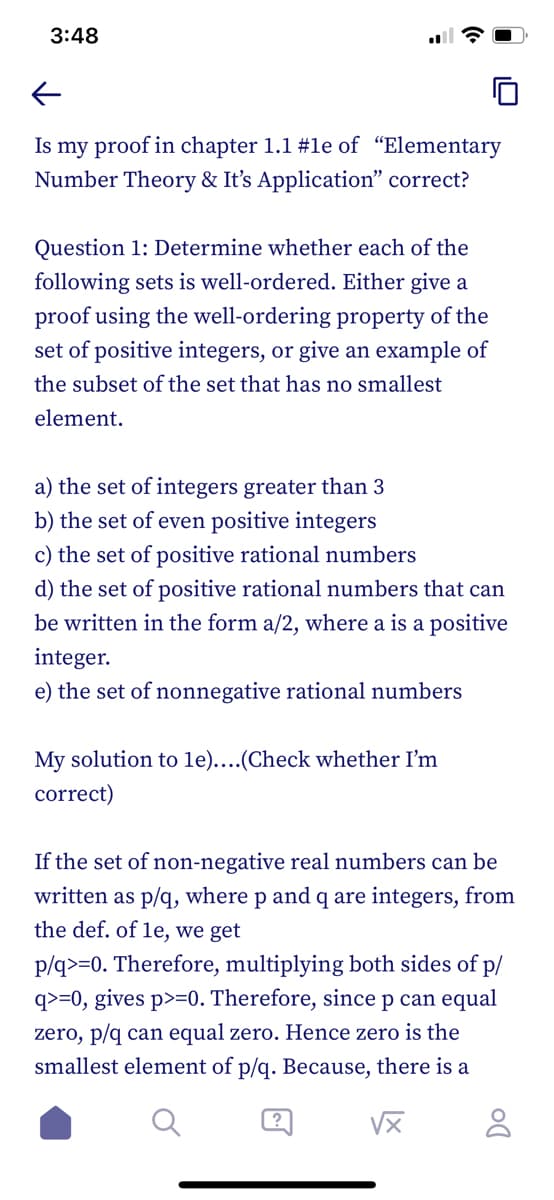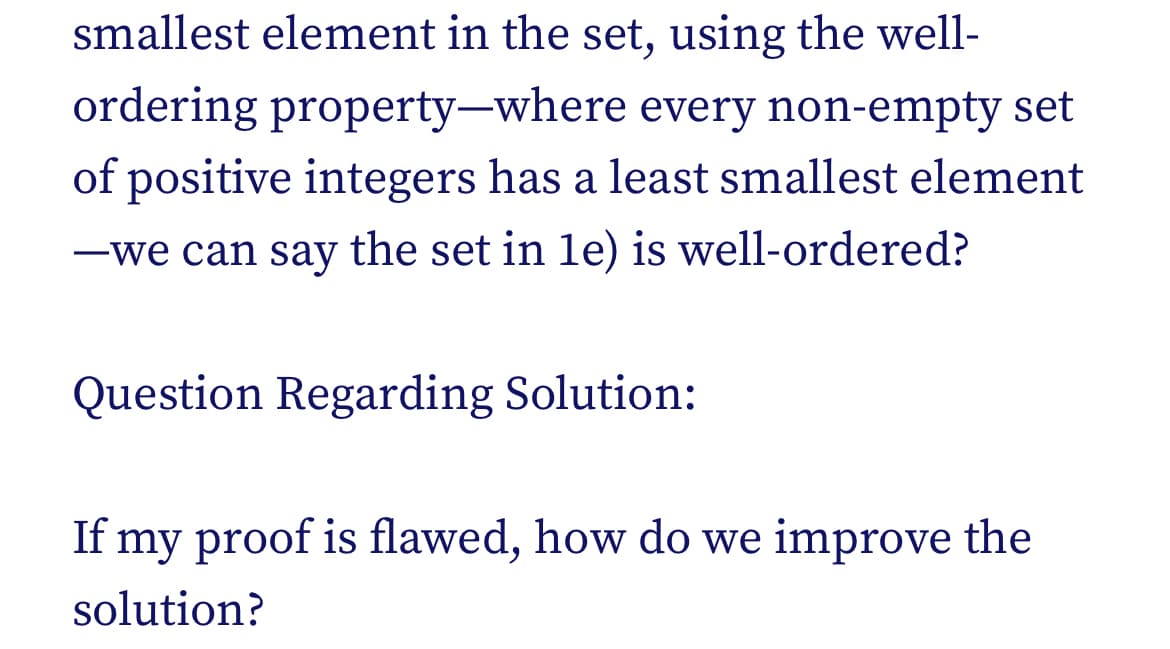e) the set of nonnegative rational numbers My solution to le)....(Check whether I'm correct)
e) the set of nonnegative rational numbers My solution to le)....(Check whether I'm correct)
Elements Of Modern Algebra
8th Edition
ISBN:9781285463230
Author:Gilbert, Linda, Jimmie
Publisher:Gilbert, Linda, Jimmie
Chapter2: The Integers
Section2.6: Congruence Classes
Problem 25E
Related questions
Question
100%
See the images. I wasn’t able to copy and paste my previous question? The question was rejected.

Transcribed Image Text:3:48
←
Is my proof in chapter 1.1 #le of "Elementary
Number Theory & It's Application" correct?
Question 1: Determine whether each of the
following sets is well-ordered. Either give a
proof using the well-ordering property of the
set of positive integers, or give an example of
the subset of the set that has no smallest
element.
a) the set of integers greater than 3
b) the set of even positive integers
c) the set of positive rational numbers
d) the set of positive rational numbers that can
be written in the form a/2, where a is a positive
integer.
e) the set of nonnegative rational numbers
My solution to 1e)....(Check whether I'm
correct)
If the set of non-negative real numbers can be
written as p/q, where p and q are integers, from
the def. of le, we get
p/q>=0. Therefore, multiplying both sides of p/
q>=0, gives p>=0. Therefore, since p can equal
zero, p/q can equal zero. Hence zero is the
smallest element of p/q. Because, there is
√x
8

Transcribed Image Text:smallest element in the set, using the well-
ordering property-where every non-empty set
of positive integers has a least smallest element
-we can say the set in le) is well-ordered?
Question Regarding Solution:
If my proof is flawed, how do we improve the
solution?
Expert Solution
This question has been solved!
Explore an expertly crafted, step-by-step solution for a thorough understanding of key concepts.
Step by step
Solved in 3 steps

Recommended textbooks for you

Elements Of Modern Algebra
Algebra
ISBN:
9781285463230
Author:
Gilbert, Linda, Jimmie
Publisher:
Cengage Learning,

Algebra & Trigonometry with Analytic Geometry
Algebra
ISBN:
9781133382119
Author:
Swokowski
Publisher:
Cengage

Elements Of Modern Algebra
Algebra
ISBN:
9781285463230
Author:
Gilbert, Linda, Jimmie
Publisher:
Cengage Learning,

Algebra & Trigonometry with Analytic Geometry
Algebra
ISBN:
9781133382119
Author:
Swokowski
Publisher:
Cengage